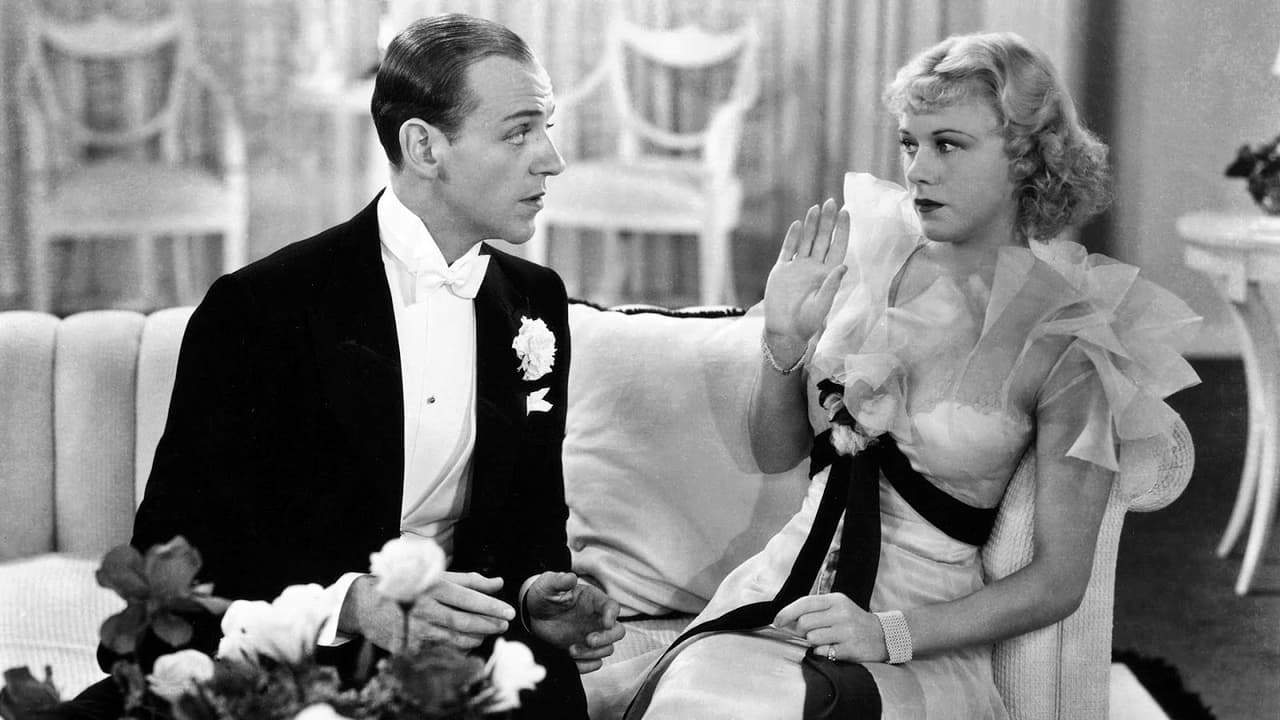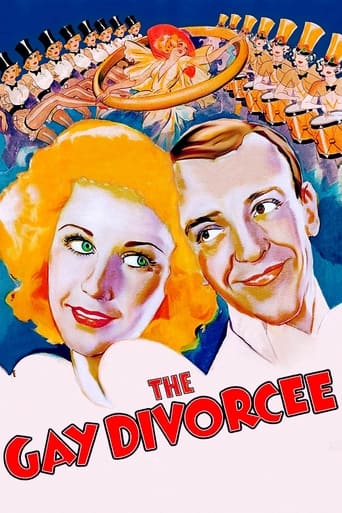

Brilliant and touching
... View MoreAmazing worth wacthing. So good. Biased but well made with many good points.
... View MoreBy the time the dramatic fireworks start popping off, each one feels earned.
... View MoreThe joyful confection is coated in a sparkly gloss, bright enough to gleam from the darkest, most cynical corners.
... View MoreThere are movies that are meant to make you think, and movies meant to shock and keep you in suspense. Forget that. This is pure entertainment. Wonderfully cast, beautiful sets and art direction...and then, the dance. The magnificent Night and Day is meant to be absorbed and cherished as that one moment when everything was perfect. Just enjoy. Nothing recent comes close.
... View MoreIt's true the best things happen when you're dancing!Fred Astaire & Ginger Rogers star in the film that won the first Oscar for Best Song - The Continental.Ginger stars as Mimi, a woman seeking a divorce from her absentee husband. Her Aunt makes arrangements to have it appear as though there has been impropriety. It is ASSUMED that Fred Astaire is the "arrangement" and calamities follow, along with lots of dancing of course.Cute. Worth the rental!
... View MoreWell, Fred and Ginger were really beautiful together. Try to imagine this: clean, very clean environments with some evocative—artificial— horizons, here a seaside resort, lovers who are destined but fate dredges up all sorts of dreamlike illusion to keep apart, a plot that emphasizes both fate and multilayered worry about hidden selves, the illusion (the worry) conquered with persistent love and expressed with dance.And yet, what a striking thing that it doesn't work like noir, where fate and hidden selves play a similar function; the difference is that the viewer has too much control over the players and plot.Is this why it registers like magic? We trust that all is going to turn out well.. Like Fred's character, we persist with the story because we feel safe and happy that it will all turn up for the better.From this pov, mishap thrown up by the gods is not as in noir the cause of anxious hallucination, but small, glittering bubbles of fate. Of course it is all so sunny, because the protagonist is, and is unafraid to take chances—this infectious radiance colors the world.Top Hat is much more intricate, because you have two characters doubled with several more layers, here just one. This is easier to digest, more fun.
... View MoreThe movie musical had been a Hollywood staple since the dawn of the talkies, but after a few years the novelty of the all-singing picture was wearing off and the studios had to refresh the genre with new tricks and, most crucially, popular stars. Old hand Al Jolson had reinvented his image, Bing Crosby was a fresh-faced newcomer, but most successful of all was the duo of Fred Astaire and Ginger Rogers. This was their second appearance together, and the first where they were the lead players and main attraction.The two of them were rather different in background. Astaire had already been an established star on the stage and having worked with Ziegfeld was very much in touch with that passing generation of theatrical extravaganza, but he was a newcomer to cinema. Rogers on the other hand already had two-dozen movie credits to her name, and had gained a reputation in small roles, often as a catty, antagonistic chorine. But despite their differences they have in common an approach to dancing that, despite professional precision, brings out a lot of personality. And both can act. Ginger would later prove herself to be an excellent dramatic actress, and is steady enough here. Fred just has an easygoing charm that seems as effortless as his dancing. In a non-musical, these two would seem an odd pairing – it's when they dance we see them click. But these were early days yet, and in The Gay Divorcée they lack that sense of familiarity around each other that would make their later romances seem so right.This was also the first time Astaire and Rogers were put before director Mark Sandrich, the man who helmed their most successful features together. Sandrich keeps a sort of gentle rhythm going throughout the picture with some delicate camera moves, such as the opening sweep through the restaurant onto Astaire's dancing fingers. His approach to the musical numbers was always oblique yet effective. For "Needle in a Haystack", the song is born out of a dialogue scene, with the camera still in its place, the sofa in the foreground separating us from Astaire, who (very unusually) is framed in profile. After one verse, the angle changes to place us in front of him. The camera then follows him as he gets up and selects a tie from a valet, and the dance just segues out of that movement. Sandrich's ability to make the songs flow seamlessly in and out of the non-music scenes was a key part in the ongoing revolution in how musicals were made.One thing that makes a musical like The Gay Divorcée seem somewhat archaic is its plot. It's a comedy of errors that might have been quite good had it been fully developed as one, but the way the narrative twists to fit a song it becomes obviously artificial. It also suffers from an unpleasant quality of many romances of the era, in that the "romance" basically consists of the man stalking and harassing the woman until, against all probability, she falls for him (and not even the suave Mister Astaire can stop this from appearing creepy). The only thing that saves this from being a handful of noteworthy song-and-dance routines strung together with a limp story is the often witty dialogue and the way it is delivered by a wonderful supporting cast. Just as Fred and Ginger established their screen persona, so too did Edward Everett Horton become the fussy, mother-hen sidekick, Eric Blore the chirpy, intrusive butler and Erik Rhodes the bungling would-be Latin lover. These three are all excellent and, with the romantic interplay between Astaire and Rogers not quite as fizzing as it should be, dare I say they even overshadow the two leads? (Yes, I do dare say).
... View More